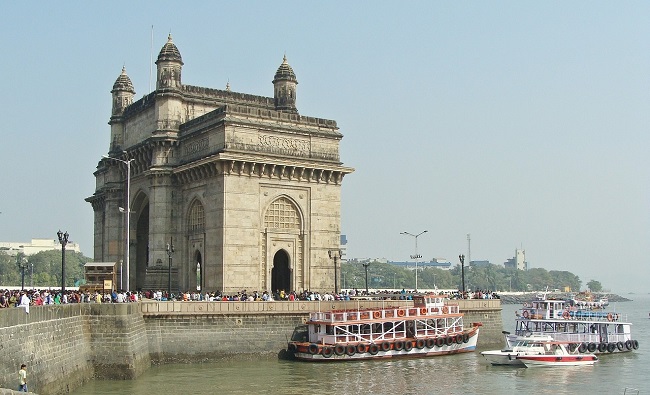India – The Key Emerging Market for 2019
Why Invest in India in 2019
How is India now? Is it time to invest now? The short answer, as so many questions in investing, it depends! Emerging market experts such as Mark Mobius or value investor Mohnish Pabrai bet their money on India in 2019 and other experts think so, too. It is one of the more stable countries in the region.
Within the next 10 months, the world’s most populous country will no longer be an officially Marxist state. It will, instead, be the world’s biggest democracy — a colossal nation differing in many crucial ways to the current titleholder.
With the Indian stock market tanking in 2018 thanks to a global correction and increased trade uncertainty, enormous bargains have revealed themselves. But is this enough to get excited to invest at the beginning of 2019? Let’s dive deep into the question buy looking at some key research components.
Indian Politics
From the outside, the world’s biggest democracy — it had a mind-boggling 814 million eligible voters in 2014 — is a something of a shambolic underachiever. Despite dramatic economic growth since the end of its Nehru-Gandhi dominated leftist years in the 1980s, it is nowhere near the pace of its giant northeastern neighbor.
While China is busy militarizing the South China Sea, building its own flying boats, and infiltrating India’s own doorstep by seducing nations like Sri Lanka and Myanmar into its orbit, New Delhi seems held down by having bigger fish to fry.
Their perennial enemy, Pakistan, remains as intransigent and confrontational as ever. Huge areas of the country remain underdeveloped. And other areas remain gripped by insurgencies that fester away with no sign of abating.
Yet for all this, we believe that the long-term prospects for India are, in fact, better than for the PRC. This week we’ll have a look at the ‘goods’ of the Republic of India, which boil down to two things: a flexible and decentralized political system, vigorous engagement with the outside world, and an innovative and opinionated middle class.
Indian Diplomacy
Since independence from Britain, India has hewn with great loyalty to its vision of a democratic, pluralistic society. We will cover one of the country’s abiding tensions — between Hindu and Muslim — next week, but for now, the key message is this: very few countries can sustain the level of acrimony that India has been able to, and survive, let alone thrive.
Whereas in China, over 90% of people identify as Han, and minorities such as the Uighurs and Tibetans are powerless to stop their cultures and political voices being crushed, such supremacism is impossible in India.
With a staggering diversity of languages, religions, and races, the Republic has incorporated the shocks and shudders that come with billions of people who speak, worship, and look different into the very foundations of its system. For all that India looks like it is constantly toppling, it will be next to impossible for it to actually fall.
In contrast, the PRC’s centralized, uniform political system is much less able to sustain internal dissent. Witness the fact that protests on the scale of Tiananmen Square are no infrequent in India — and yet, the Republic abides.
India and China
Despite Tom Clancy’s misgivings, India was — and remains — a natural ally of the West in Asia, and as such will act in tandem with what is still the world’s most successful ideological grouping. Values such as democracy, free speech, egalitarianism, and freedom of conscience — the very values that the West so vigorously espouses in public — are at the core of the Indian project.
The profound suspicion on the part of India’s elite towards what they see as the patronizing and neo-colonialist behavior of the West goes far, but only so far. Ultimately — and particularly given the US’s obsessive fear of so-called ‘Islamic Terror’ — if India can sort out issues of endemic corruption, it will be far easier for foreign companies to do business in India, and vice versa, on a cultural level, than in China.
Indian Middle Class
While China’s high tech capacities are rapidly developing into some of the world’s most formidable, it’s long been the case that innovation happens more readily and more extensively in places where people are free to express their views and to develop them without interference.
The surge of IT industries in south India has already pushed that part of the nation to become one of the world’s great info hubs, with companies like Infosys coming out of cities like Bangalore.
Much of this drive comes from an ambitious, highly educated, and forward-looking middle class. Comfortable that their voice is being heard, and presented with plenty of opportunities, the 20 and 30-somethings of the subcontinent cut a dramatic contrast to the entitled ‘millennial’ of the West.
For most Indians, memories of poverty and humiliation go back only two or three generations; the prosperity of the present is something not to be taken for granted but to be nurtured.
A key result of this is the staggering capacity of the country to achieve remarkable feats for incredibly low prices — such as their $100 million mission to Mars, Mangalyaan.
It’s interesting to note too that many of those who worked on that particular space project were women, showing the power of India’s rising female demographic.
Indian Stock Market 2018

It wasn’t only a stellar year for Indian stocks, but also for India’s currency – the Indian rupee. Nominated as Asia best currency in 2017, it traded at 64.40 to the US dollar in February 2018. Indeed, an impressive performance for the currency rising from 68 in late 2016 while other Asian currencies lost ground.
This performance has been due to a combination of factors such as the bullish local economy, easing monetary policy, as well as a general strength of global macroeconomics led by the US. The rally in domestic equities further supported the currency momentum during 2017 and into the new year. Can its rise continue throughout 2018?
How to invest in India?
Investing in India has also become a lot easier. According to ETFdb.com, today there is a range of ETFs that exclusively invest in various segments of India stock markets. All the big brand names of asset management are present with their own line of products such as the iShares MSCI India ETF (INDA), WisdomTree India Earnings Fund or the Franklin FTSE India ET. These passively managed products make it easy for investors to participate in India’s booming stock markets.
Those investors who prefer and trust the skills of capable stock pickers can do so with the help of traditional mutual funds that focus exclusively on India. Again, all the leading brands have their own product line.
Less known hedge funds and smaller mutual funds offer their skills to beat the prominent Indian benchmarks. Mohnish Pabrai managing partner of Irvine, Calif.-based Pabrai Investment Funds, has been visiting India for value investment opportunities with growth potential. He is probably the most prominent value investor that favors Indian stocks over US stocks.
According to Pabrai, he has been having difficulties to find anything of outstanding value in the US. On the other hand, India offers so many diamonds in rough that his visits to India have been increasing. “Of the 5,000 publicly traded companies in India, around 1,000 are really good. It’s a very big base. These guys are not only going for it, but they underestimate the tailwind that’s going for them.”
India – The Bad
India’s stock market is down by ca. 7% in 2018. See it how you will, pointing to amazing bargains and great future potential, the yearly performance is bad and that impacts investors’ psychology. Understanding investors’ psychology and how the flow of capital works will be key to understanding India in 2019 and to outperform the average investor. In short 2019 doesn’t look promising, especially the first two to three quarters. Read the second part on India, where we cover the risks and challenges India is still facing in 2019. With India, emerging markets investors need to look at the potential pitfalls, too to be successful year after year and India’s economy that still needs time to catch up with other developing countries.
Investing in India Summary
With its population in the billions, its staggering diversity of resources, a burgeoning middle class, reasonably effective education system, incrementally improving infrastructure, IT skill pool, and international connections, India remains hands down the best opportunity for anyone looking to make a buck in South Asia.
But — not all is rosy in the subcontinent. Elections at the end of last year saw a series of setbacks for the ruling Hindu-conservative BJP party of Prime Minister Narendra Modi, possibly one of the most powerful men in the world up till this point. He remains personally extremely popular for his reputation for personal integrity and his business-friendly policies. His party, apparently, not so much. Observers now believe that the BJP will face a serious challenge in this years elections, in which India’s mind-boggling electorate of 850 million goes to the polls.
Whoever comes after the BJP — and really, there’s only one option, and that’s Congress — will have less of a grip on the system than the BJP, at least partly due to the former’s strong local presence in states like Uttar Pradesh. With India’s economy slowing, the outlook for India suddenly looks a little darker. Still — it remains South India’s most lucrative bet.







